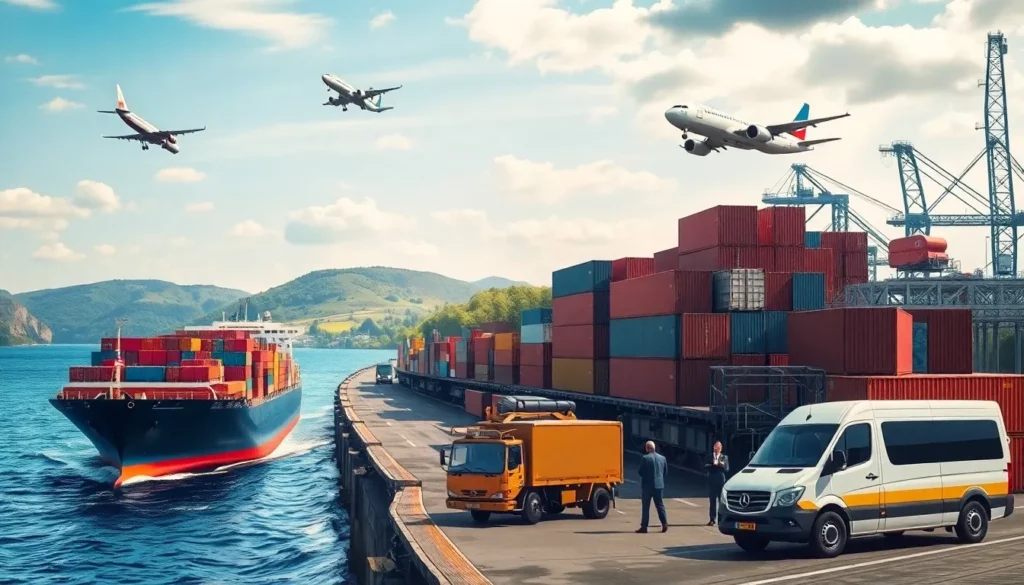Shipping from China to Hungary can seem daunting. However, with the right information and strategic approach, businesses can streamline this process to ensure timely and cost-effective deliveries of their goods. This guide aims to provide a comprehensive overview of the different shipping methods, costs, and procedural details involved in moving goods from China to Hungary, ensuring you have all the information necessary for a seamless logistics operation.
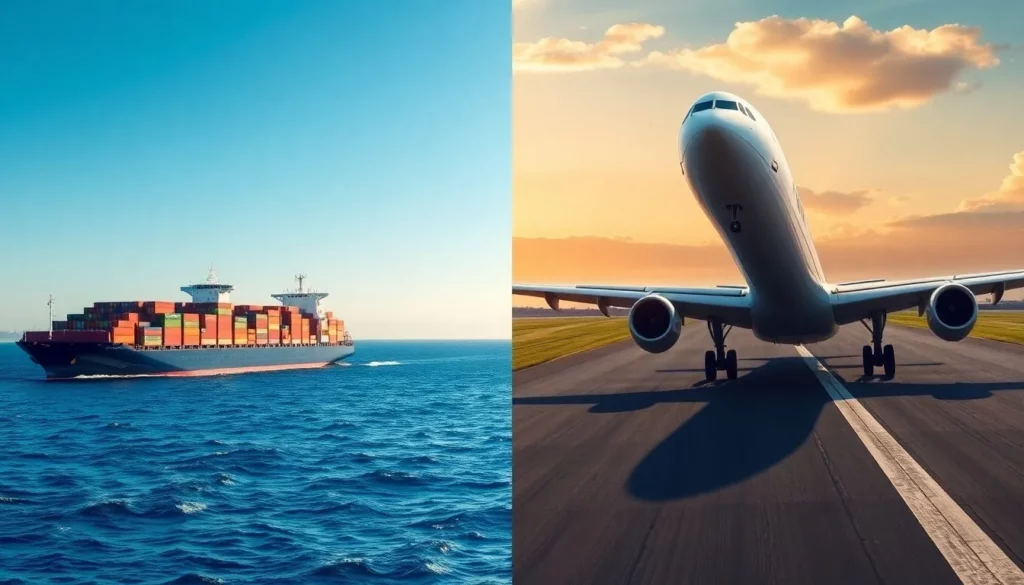
The Core Shipping Methods from China to Hungary
Sea Freight: The Most Economical Solution for Bulk Cargo
Sea freight remains the most budget-friendly method for transporting large volumes of goods from China to Hungary. This method is highly suitable for bulk shipments that are not time-sensitive. Sea freight not only offers an economical solution but also provides a range of service levels. Shipping by sea involves transporting goods across major ocean lanes and then forwarding them to landlocked destinations like Hungary via road or rail.
The cost-effectiveness of sea freight is unmatched, especially when dealing in large quantities, such as Full Container Loads (FCL). The transit time, though longer, can be efficiently synchronized with the supply chain cycles by planning the inventory management adequately. The overall savings gained by choosing sea freight often outweigh the extended delivery timeframe, making it a preferred choice for many enterprises.
Air Freight: The Optimal Choice for Large, Time-Sensitive Cargo
For businesses prioritizing time over costs, air freight offers a swift alternative. It’s particularly advantageous for high-value or perishable goods that demand expedited transit. With operations through major airports, air freight ensures that goods reach Hungary within a matter of days. This speed comes at a higher cost, yet the efficiency and security it provides can justify the investment, particularly for urgent shipments.
Air freight services are best utilized for parcels weighing over 100-150 kg. While more expensive than sea freight, it provides unparalleled speed, making it indispensable for urgent deliveries where minimizing delays is crucial. By syncing with international flight schedules, air freight reduces transit time significantly, helping businesses maintain a reliable supply chain.

Rail Freight: A Balanced Alternative in Speed and Cost
Rail freight provides an optimal middle ground between the slower sea freight and the costly but swift air freight. It leverages the infrastructure of the New Silk Road, ensuring goods are transported in a scheduled manner from China to various destinations in Europe, including Hungary. Rail freight is highly effective for medium-sized shipments where a balance of cost and delivery speed is necessary.
By integrating this method, businesses can benefit from a predictable schedule and cost-efficiency. While not as fast as air freight, rail is significantly quicker than sea freight and operates as a viable alternative for non-time-critical shipments that still require a degree of urgency. The connectivity offered by the rail networks across the Eurasian landscape places Hungary within easy reach, further solidifying its position as a strategic logistics hub.
Express Freight (Courier): The Fastest Door-to-Door Service
For sending small parcels, documents, or high-value samples, express courier services are unmatched. They offer the fastest door-to-door service, efficiently handled by experienced providers such as DHL, FedEx, and UPS. These couriers ensure not just speed but also dependability, with the entire logistics cycle including customs processes, being tightly managed and tracked.
The comprehensive tracking and simplified customs processes involved in express shipments give businesses peace of mind, knowing that their goods are being handled with utmost care and precision. Despite the higher costs associated with express freight, its unmatched speed and convenience make it the go-to option for urgent or time-critical deliveries.
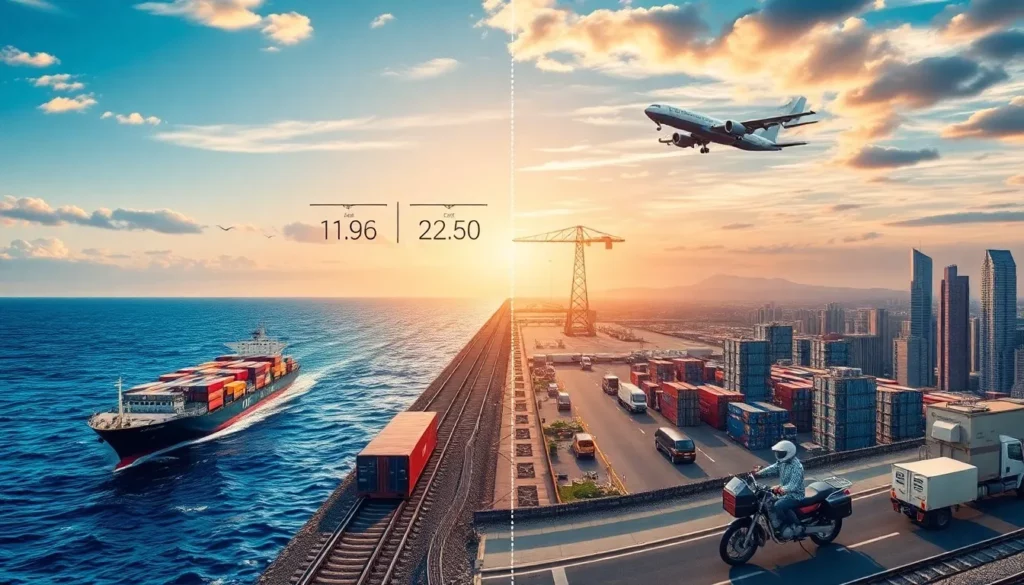
Cost & Transit Time Analysis: A Detailed Comparison
A Breakdown of Shipping Cost Factors
Understanding the cost structure of international shipping is crucial for businesses looking to optimize their logistics budgets. Here are key factors impacting costs:
- Transport Mode: Different methods such as sea, air, rail, or express each come with varying cost implications.
- Chargeable Weight: Calculations are driven by either the gross weight or the volumetric weight, depending on which is greater.
- Incoterms: Terms like FOB (Free on Board), CIF (Cost, Insurance, and Freight), DDP (Delivered Duty Paid) set the responsibilities and costs split between buyer and seller.
- Surcharges and Demand Fluctuations: Seasonal demand and fuel surcharges also influence shipping costs considerably.
Estimated Transit Times for Each Method
Shipping times are influenced by the chosen method. Here’s a breakdown of typical durations:
- Sea Freight: Expect deliveries within 30-45 days.
- Rail Freight: Transit times range from 16-25 days.
- Air Freight: Typically takes 5-10 days.
- Express Courier: The fastest option, with delivery within 3-7 days.
Understanding these timelines is essential to synchronize logistics with production schedules.
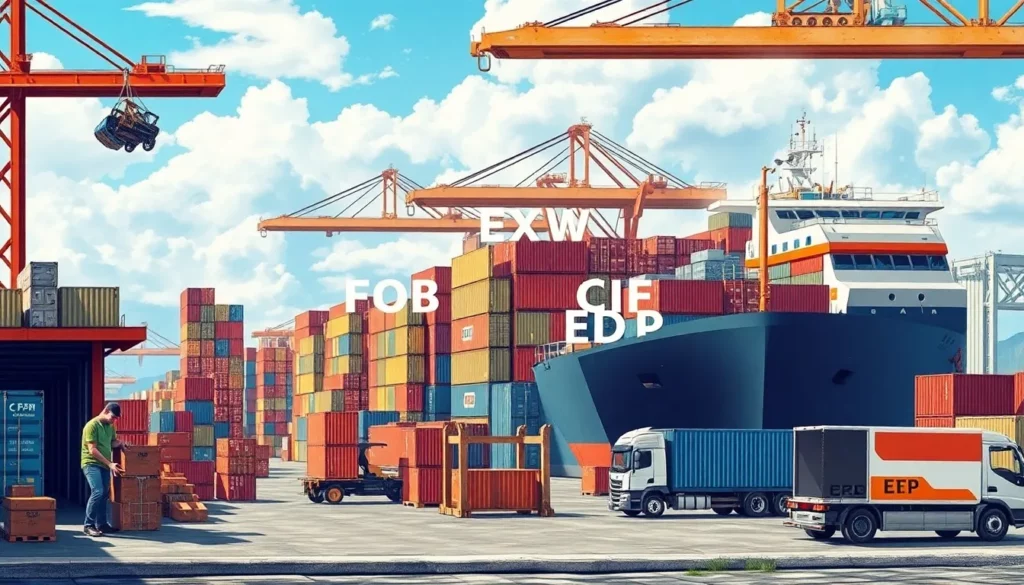
Understanding Common Shipping Incoterms
Incoterms define the terms of trade and financial responsibilities. Here’s a look at frequently used terms:
- EXW (Ex Works): The buyer has full responsibility once the goods leave the seller’s premises.
- FOB (Free on Board): The seller handles costs up to and including loading the goods onto a ship; after that, it’s the buyer’s responsibility.
- CIF (Cost, Insurance, and Freight): The seller pays for shipping up to the destination port, including insurance.
- DDP (Delivered Duty Paid): The seller bears all the risks and costs up to the buyer’s location, including import duties and taxes.
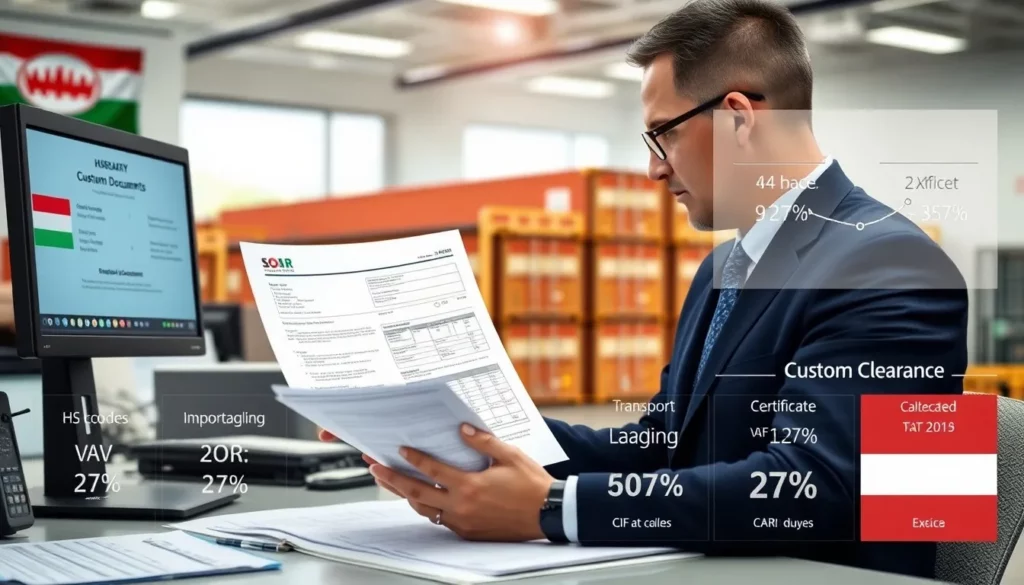
Mastering the Customs Clearance Process in Hungary
Essential Documents Required for Hungarian Imports
Navigating customs seamlessly often hinges on the accuracy and completeness of documentation. Essential documents for Hungarian imports include:
- Commercial Invoice: Outlines the sale details and serves as proof of purchase.
- Packing List: Describes product details and quantities.
- Transport Document: Either a Bill of Lading (sea), Air Waybill (air/express), or Rail Waybill.
- Certificate of Origin: Verifies the origin of the goods.
- EORI Number: Required for trade within the EU, enabling customs tracking and processing.
How to Calculate Import Duties and Taxes
Clearing customs involves precise calculations of duties and taxes based on:
- HS Code: Determines the duty rate according to the Harmonized System classification.
- CIF Value: Duties are calculated based on the cost of goods, insurance, and freight charges.
- VAT: Hungary imposes a standard Value Added Tax (VAT) of 27% on imports.
- Excise Duties: Certain goods may incur additional charges depending on their nature.
Being aware of these charges helps in accurately forecasting total landed costs and ensuring full compliance with Hungarian regulatory requirements.
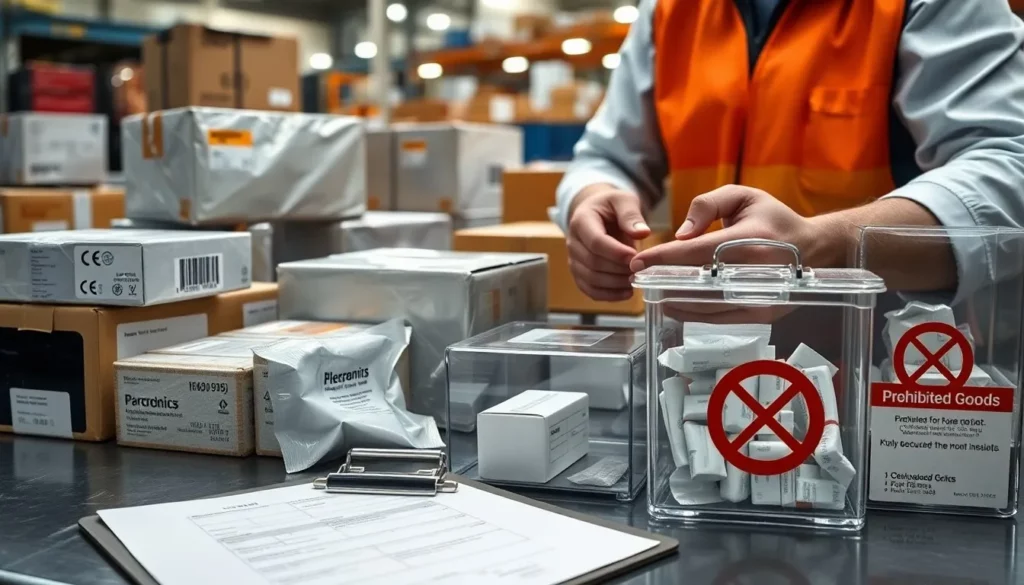
Navigating Prohibited & Restricted Goods
Import regulations often prohibit or restrict particular items. To avoid compliance pitfalls, ensure:
- Prohibited Goods Check: Items like narcotics and counterfeit products are strictly banned.
- Special Permits: Some imports might require documentation such as certifications for electronics or permits for pharmaceuticals.
- EU Standards Compliance: Goods must meet EU standards, often signified by the CE marking.
Maintaining a detailed compliance checklist supports legal and efficient business operations.
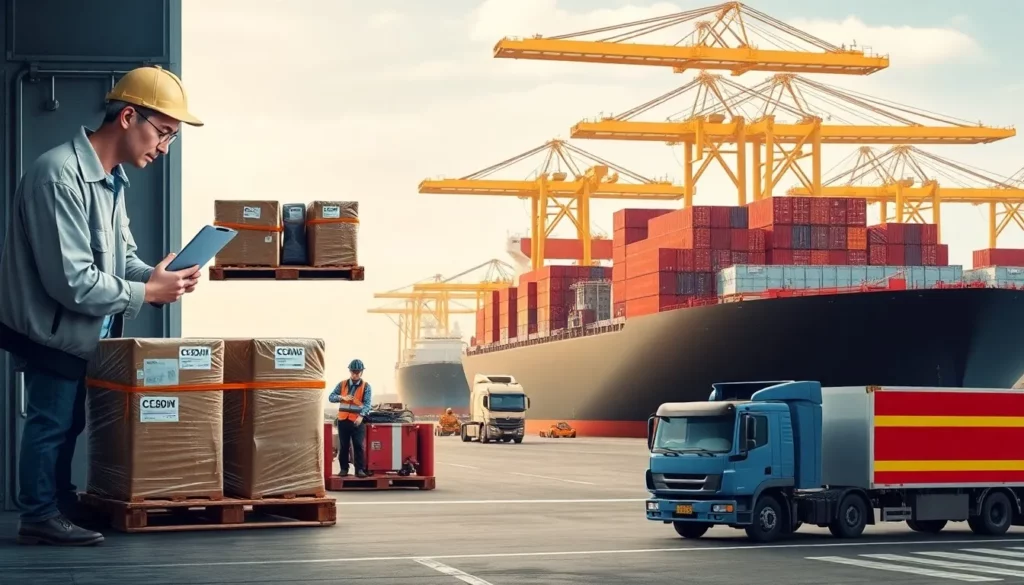
The End-to-End Shipping Journey: A Step-by-Step Guide
Step 1: Partnering with a Freight Forwarder & Pre-Shipment Prep
The initial phase is critical in ensuring a smooth shipping process. Engage a reliable freight forwarder and ensure you:
- Select the right partner based on your logistical requirements.
- Pack and secure goods appropriately, using pallets if necessary.
- Clearly label packages with complete consignee and origin details for efficient identification and handling.
Step 2: Export from China and International Transit
Once prepped, your goods embark on the export journey:
- Goods move from the manufacturer to the designated port, airport, or rail terminal.
- Chinese customs clearance is completed to ensure goods are legally shipped.
- The cargo begins its primary route to Europe, monitored throughout its journey.
Efficiency in this stage relies on proactive coordination and precise documentation.
Step 3: Arrival, Customs Clearance, and Insurance in Europe
Landing smoothly in Europe is the next goal. Here’s what it entails:
- Arrival at customs requires timely submission of declarations to Hungarian authorities.
- Duties and taxes are paid.
- Ensure cargo insurance is active, protecting against potential damage or loss.
This meticulous process guarantees that once goods clear customs, they’re quickly moved into distribution channels.
Step 4: Final Mile Delivery Within Hungary
Ensuring goods reach their ultimate destination is the final milestone:
- Goods are released from customs and transported to final warehouses or retail locations.
- This phase, known as the “last mile delivery,” is crucial for customer satisfaction, ensuring goods arrive in perfect condition and on schedule.
Efficient final mile coordination completed the logistics chain, closing the loop with impeccable service.
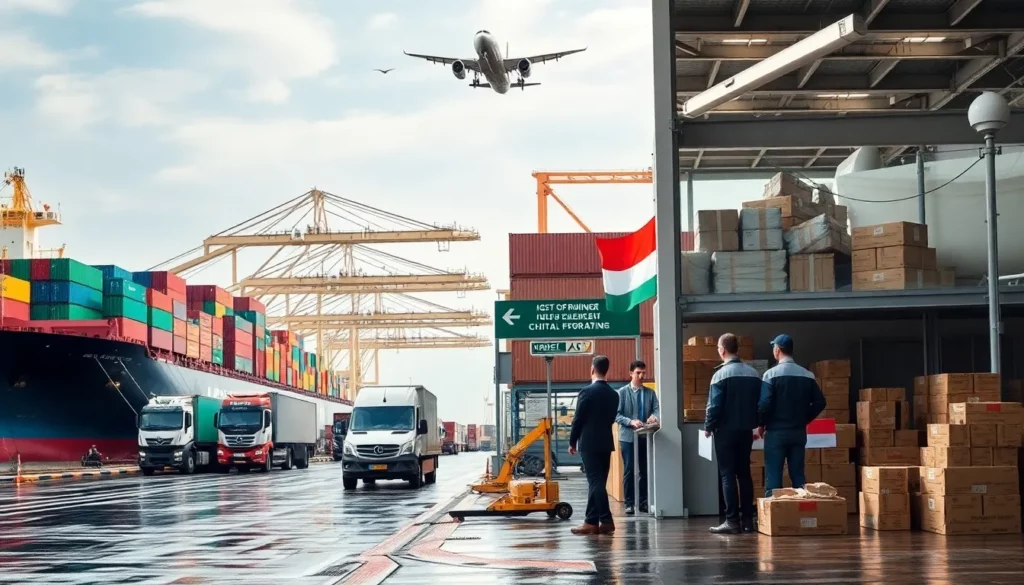
Frequently Asked Questions (FAQ) for Importers
1. What is the best and cheapest shipping method from China to Hungary?
The choice of shipping method depends on various factors such as the nature of the goods, budget, and urgency. Sea freight offers the most cost-effective solution for bulk shipments, while air and express freight provide expedited options for time-critical and high-value deliveries.
2. Why is my package stuck in Hungarian customs and what should I do?
Customs delays often occur due to incomplete documentation or customs duty discrepancies. Ensure all paperwork is accurate and duties are correctly calculated and paid. It’s also beneficial to stay in regular contact with your freight forwarder for updates.
3. Do I need an EORI number to import goods into Hungary?
Yes, an Economic Operators Registration and Identification (EORI) number is mandatory for customs processes in the EU, including Hungary. It facilitates smooth clearance by linking shipments to a unique identifier.
4. What is the difference between a freight forwarder and an express courier?
A freight forwarder manages shipping logistics, often dealing in large volumes and multiple transport modes, while an express courier provides expedited door-to-door delivery focusing on smaller parcels and swift services.
5. How can I accurately calculate the chargeable weight of my shipment?
Chargeable weight is determined by comparing the gross weight and volumetric weight of the shipment, with the greater figure being chargeable. This ensures you pay a fair price based on space or weight utilized in transport.
Conclusion:
Thoughtfully evaluate your logistics needs considering budget, shipment size, and urgency. Each shipping method presents distinct advantages catering to specific logistical scenarios.
Engage with logistics experts to craft a customized shipping strategy, ensuring your pathway from China to Hungary is efficient, compliant, and cost-effective. With the right approach, you can optimize your supply chain and sustain competitive advantage in the European market.

